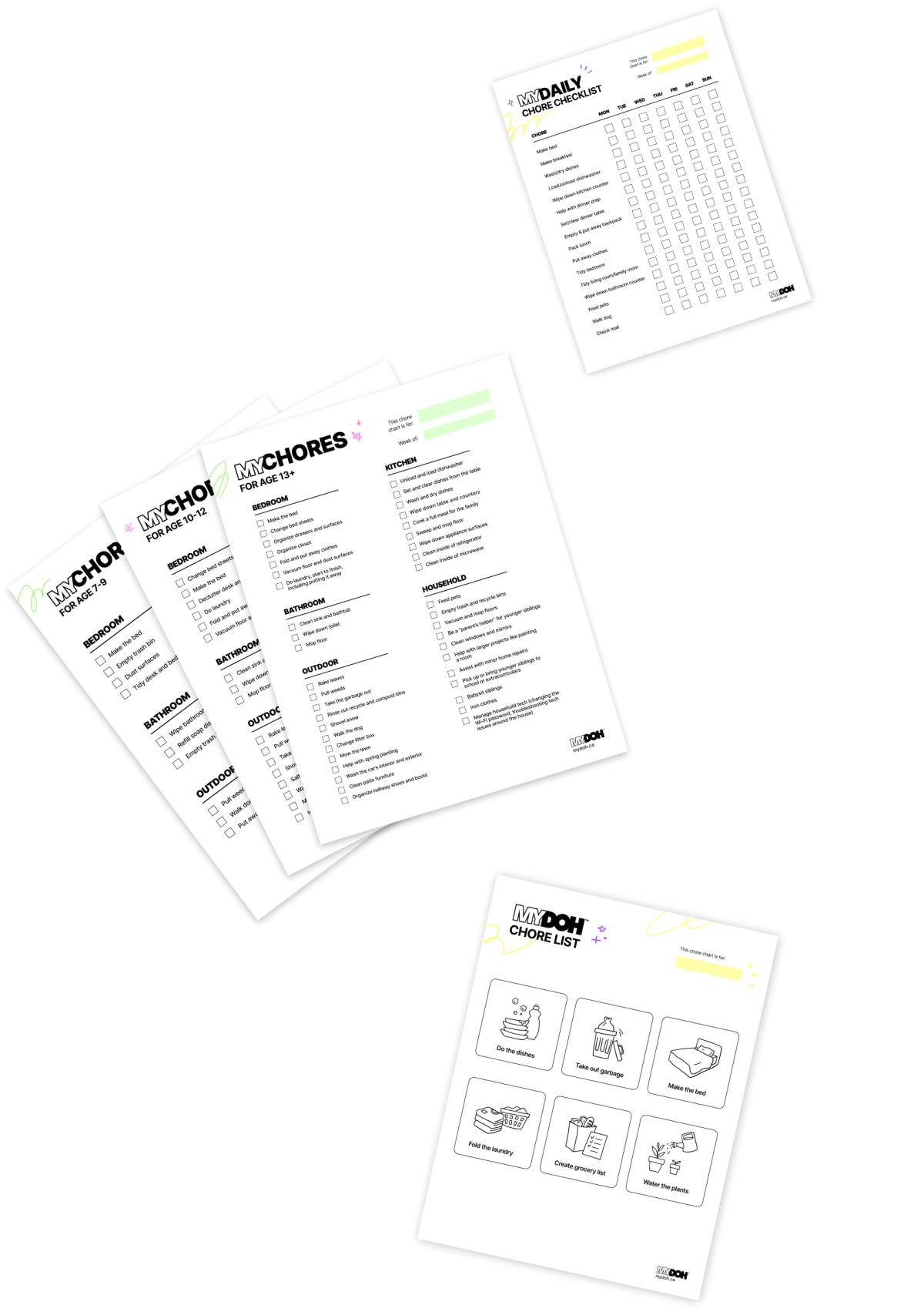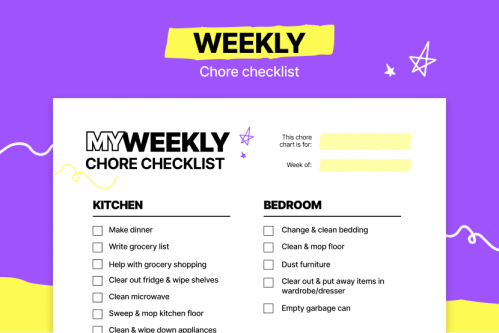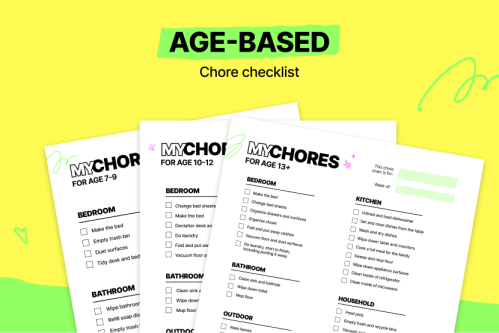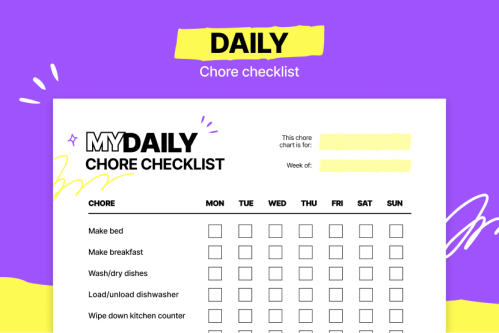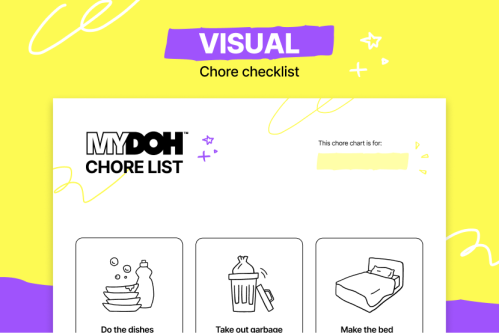FAQ
Help set your kids and teens up for successfully completing their chores by printing off a list of tasks to check off as they go.
- Choose an appropriate chore chart—daily chores, weekly chores, seasonal, and by age group.
- Print as many copies of your chosen chore charts as needed and fill them in where necessary before handing off to your kids to check off tasks. Alternatively, you could create a reusable chore chart by simply laminating one of our chore checklists and using a dry erase marker.
- Praise your kids for a job well-done once the chore chart is complete, including allowance payment if that’s part of your household routine.
Assigning chores to kids is usually the easy part—getting kids to do the work can be more of a challenge. Parents can encourage their kids to do household chores by making chores a non-negotiable part of being a family, drafting a chore agreement, or printing off a chore chart to help kids manage their responsibilities. Praising kids for a job well done as well as tying an allowance to chores can also encourage them to help out around the home.
There are a number of factors that help determine the right set of chores to assign your kids including age, season, and physical and intellectual capabilities. Kids under 10 years of age are best suited to simple tasks that don’t require much time or concentration to complete, and provide a sense of accomplishment and boost of confidence. By the teen years (13 years and up), kids are capable of taking on more chores that include complex tasks requiring problem solving skills. Of course, you know your child best, and what one 12-year-old can easily complete may be challenging for another. Chore charts can be a useful tool to track chores, gauge each child’s capabilities, and adjust your expectations.
There’s no hard and fast rules for how many chores your child should have each day. One way parents can determine the number of chores is by the amount of time they take. For young kids, who can only manage five or 10 minutes a day, that could mean only one chore (such as picking up their toys). Older kids and teens should be able to handle more chores spread out during the day, depending on their other commitments like school work, part-time work, or extra-curricular activities.
Like so many aspects of parenting, paying kids to do chores has no right or wrong answer. Part of being in a family is pitching in, so an allowance may blur those lines. Money isn’t the only value that can be exchanged for chores. Parents can exchange more screen time, a trip to the ice cream shop, or a family movie night for chores completed. The idea is to brainstorm something that has value to your child (like more independence or more of your time) instead of paying money.
